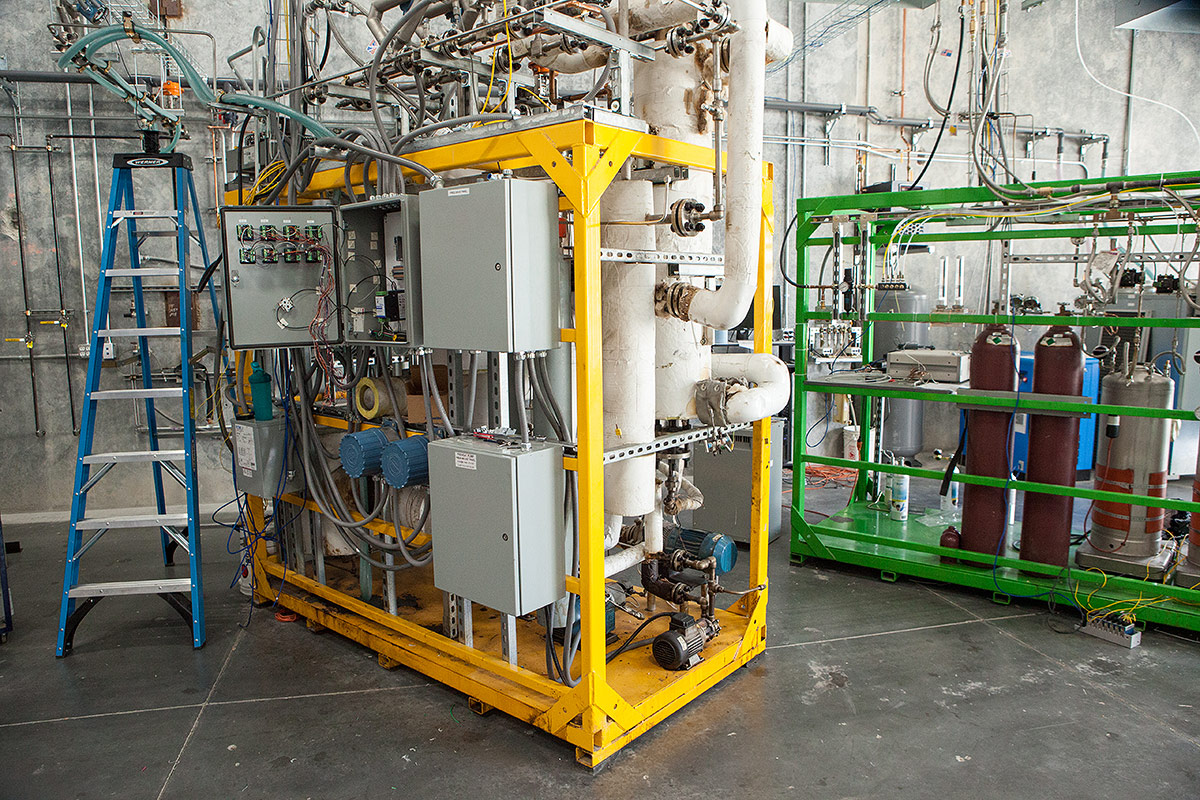Researchers at Washington State University have made a fundamental discovery about the Fischer–Tropsch process, a catalytic reaction used in industry to convert coal, natural gas, or biomass to liquid fuels. The discovery of previously unknown self-sustained oscillations in the Fischer–Tropsch process could pave the way for more efficient fuel production in the future. The findings, reported in the journal Science, reveal that this reaction periodically moves back and forth between high and low activity states, unlike many catalytic reactions which have a single steady state. These well-controlled oscillatory states could potentially be used to enhance the reaction rate and yield of desired products.
Large variations in temperature resulting in rate oscillations are typically undesirable in the chemical industry due to safety concerns. However, in this case, the oscillations are under control and are mechanistically well understood. This discovery means that research and development in fuel and chemical industries can adopt a knowledge-based approach to design catalysts intentionally and tune the reaction to induce oscillatory states that may improve catalytic performance.
The Fischer–Tropsch process, commonly used for fuel and chemical production, involves using a catalyst to convert hydrogen and carbon monoxide into long chains of hydrocarbon molecules. Despite its widespread use, researchers have had limited understanding of how the complex catalytic conversion process works.
The discovery of the oscillations in the Fischer–Tropsch reaction was made by accident when a graduate student, Rui Zhang, approached Norbert Kruse, a professor at WSU’s Gene and Linda Voiland School of Chemical Engineering and Bioengineering, with a problem he was facing in stabilizing the temperature of his reaction. As they explored the issue together, they stumbled upon the surprising oscillations.
The researchers not only discovered the presence of oscillatory reaction states but also gained insight into why these oscillations occur. As the temperature of the reaction increases due to heat production, the reactant gases lose contact with the catalyst surface, leading to a slowdown in the reaction. This causes the temperature to decrease. When the temperature reaches a sufficiently low point, the concentration of reactant gases on the catalyst surface increases, and the reaction speeds up again. This, in turn, increases the temperature, completing the cycle.
To demonstrate the reaction in the lab, the researchers used a frequently used cobalt catalyst conditioned by adding cerium oxide and modeled its functioning. Co-author Pierre Gaspard at the Université Libre de Bruxelles developed a reaction scheme and imposed periodically changing temperatures in the model to replicate the experimental rates and selectivities of the reaction.
Norbert Kruse, who has been studying oscillatory reactions for over 30 years, described the discovery of oscillatory behavior in the Fischer–Tropsch reaction as surprising due to the reaction’s complex nature. Kruse expressed his excitement and satisfaction with this breakthrough, emphasizing how rewarding it is to have such a fantastic breakthrough in their research.
This discovery opens up new possibilities in fuel production, allowing for intentionally designed catalysts and optimized reactions through the induction of oscillatory states. Further research and development in this area could lead to improved efficiency in fuel and chemical production processes.
*Note:
1. Source: Coherent Market Insights, Public sources, Desk research
2. We have leveraged AI tools to mine information and compile it



